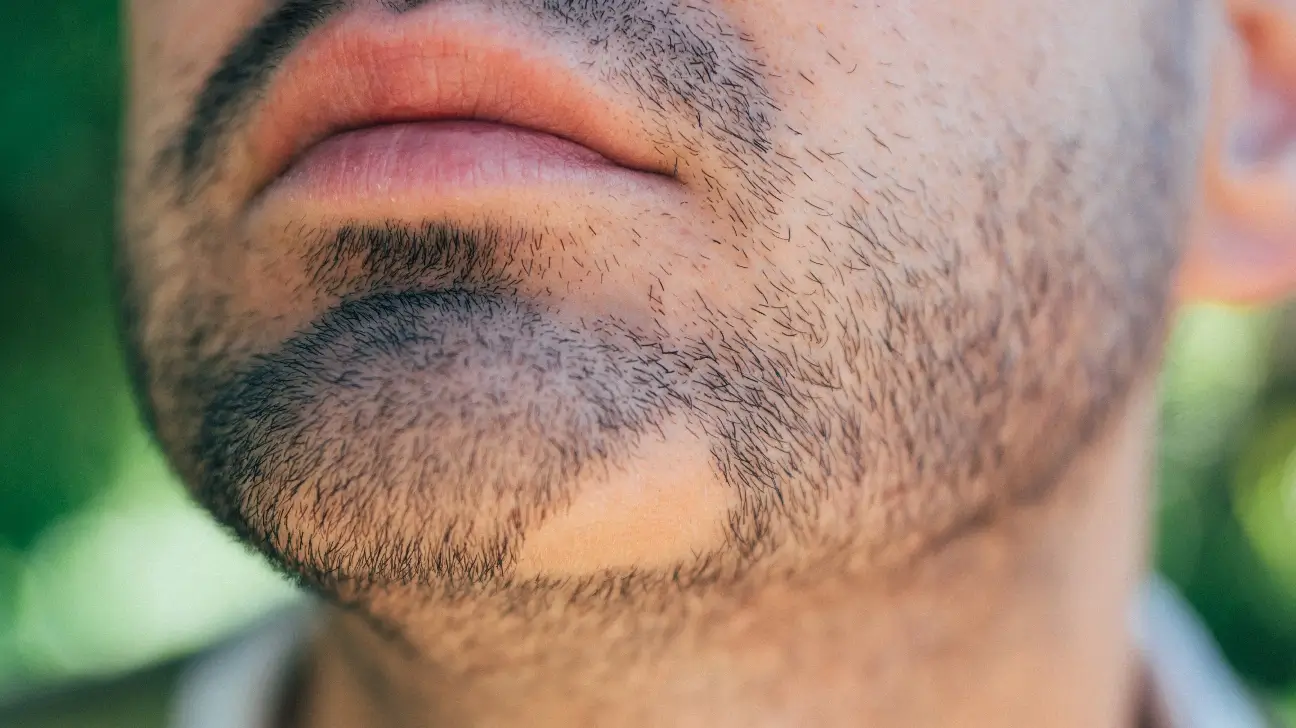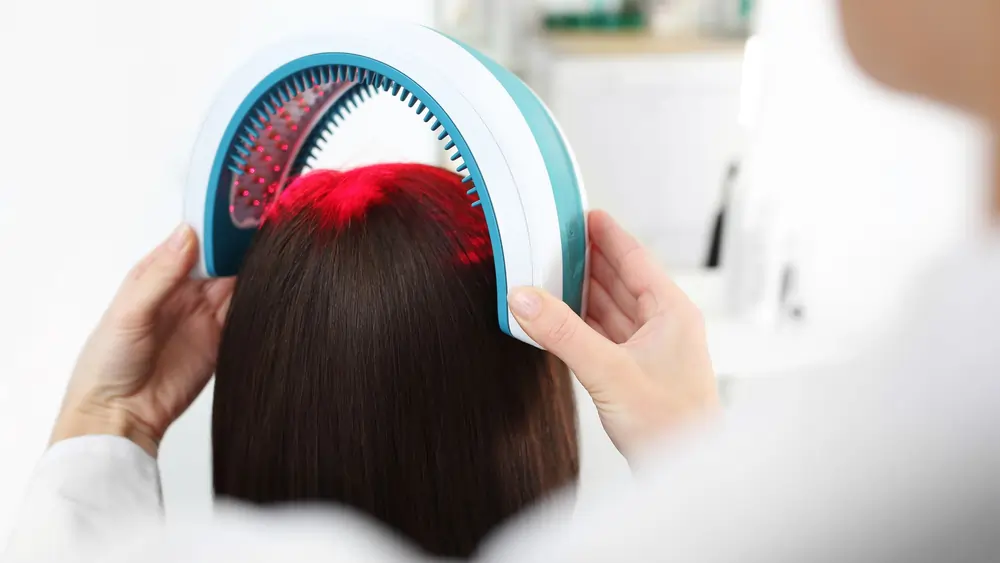Alopecia areata or spot baldness is an autoimmune disease that can be found in all races of all ages in males and females. This disease causes a loss of hair on the scalp and other areas of the body in small patches. The hair loss in these patches is different between each individual and some experience it more severely than others.
What is Alopecia areata?
Alopecia areata is an autoimmune disorder that causes you to lose your hair in patches causing spot baldness. This disorder is quite common and there are millions of people worldwide that suffer from this autoimmune disorder but this autoimmune disorder tends to strike those that are under 30.
The amount of hair that is lost is unique and different to each individual and the number of places that the hair is lost also differs between people. This condition has different forms in which it occurs. These different forms of alopecia areata are:
- Alopecia Areata Totalis: When you have this form of alopecia areata then you have lost all the hair that was on your head.
- Alopecia Areata Universalis: This form of alopecia areata causes you to lose hair all over your body.
- Diffuse Alopecia Areata: This form of alopecia areata is when there is sudden thinning occurring within your hair instead of your hair being lost in patches.
- Ophiasis Alopecia Areata: During this form of alopecia areata is when you lose your hair in band shapes around the sides and/or the back of your head.
Alopecia Areata Symptoms
In most cases, the only symptom that is experienced by the individual suffering from this disorder is hair loss, but you may also experience the following symptoms:
- Small bald patches occurring on your scalp or over your body
- Patches getting bigger forming a clearly visible bald spot
- The patches have smooth skin without redness or a visible rash
- Patches may become itchy or a burning sensation on your skin may be felt before the hair falls out
- Hair grows back on one of the bald spots but then falls out somewhere else on the body or scalp
- You lose a lot of hair over a short period of time
- Colder weather affects your hair loss rate
- Your toe-nails and/or finger-nails may become red and brittle

Alopecia Areata Causes
When you suffer from any autoimmune disease, your immune system starts to attack your own body. With this specific autoimmune disorder, the immune system attacks a person’s hair follicles that cause hair loss and can slow down hair growth.
Doctors and experts are still unsure what exactly it is that causes this disorder to become active within an individual but they have limited it down to a few different factors that can definitely play a role in triggering this disorder and causing it to become active.
Genes and Hormones
Androgenic alopecia is one of the most common types of alopecia. This type of alopecia is more commonly known as male pattern baldness which causes balding in males or experiencing a receding hairline. There is also female pattern baldness that can cause hair thinning and their hair part getting wider. This type of alopecia can be genetic and/or hormonal.
Alopecia areata is triggered when a hormone called dihydrotestosterone (DHT) binds to the testosterone that is already within the hair follicle and weakens the hair follicle. DHT is a hormone that is derived from testosterone and because testosterone is present in both men and women, the DHT can trigger alopecia in either gender leading to the development or the triggering of the autoimmune disorder.
Your genetics can cause hormonal imbalance to exist within your body, but it can also be the cause of alopecia areata. Your family history will be a good starting point to determine whether or not this autoimmune disorder is a likelihood for you. Check-in with some of your other relatives if they have been affected by alopecia areata or if they have ever suffered from hormonal imbalances.
Stress
Stress is once again one of the culprits that can cause alopecia areata to be triggered and become active within an individual. The stress that can trigger alopecia areata is normally stress from big events or changes, such as:
- Strong new medications
- Childbirth
- Physical Trauma
- Huge life changes
Nutrition
Nutrition is extremely important for our general well-being and it is also one of the best preventative steps in preventing most unwanted diseases. A poor diet that leads to nutritional deficiencies is one of those factors that can trigger alopecia areata. Ensure you get enough nutrients in your diet, such as iron, protein, vitamin C and vitamin D to help ensure healthy hair and healthy hair follicles. Should you already be suffering from alopecia areata, these nutrients could possibly help your hair grow back as well over time.
Thyroid Gland Issues
Your thyroid gland is a small gland that is situated in your neck. This gland helps to control your hormones and especially the hormones related to your metabolism. Should you have an overactive thyroid or an underactive thyroid gland, it can trigger alopecia areata. Have your thyroid tested by a doctor should you experience any of these symptoms along with your hair loss.
- Unexplained weight changes
- High Energy Levels or Low Energy Levels
- Menstruation changes
Covid-19
During the 2019-2021 Covid-19 Crisis scientists also found an association with rapidly progressive forms of AA.
Alopecia Areata Diagnosis
If you think that you might be suffering from Alopecia areata, then it is recommended that you go and seek a professional opinion from a dermatologist; more commonly known as a skin specialist. They will be able to tell you about the condition and whether or not you have it. They might:
- Discuss your symptoms with you
- Inspect the areas where you have been experiencing hair loss
- Pull on some of your hairs around the area to determine if it comes out easily or if they are still healthy and unaffected
- Check your hair follicles for any abnormalities
- Inspect your nails to determine if they indicate alopecia areata
It is possible for them to take a sample of skin and/or hair from you and have it sent to a lab to do a biopsy. This is just a more thorough way to determine if you have the condition and if not it can even indicate if there are any underlying reasons for your symptoms. Your doctor or dermatologist will then discuss the results with you.
There are many different reasons why you could be experiencing hair loss, from fungal infections to a hormone imbalance. Having blood tests done, getting a biopsy done and ensuring you are under the care of a specialist will help you get to the bottom of what is going on and what the best course of action is based on your own unique symptoms.
Alopecia Areata Treatment
With all our modern technology and treatment methods, we still haven’t found a way to cure alopecia areata. Luckily there are multiple ways to try and treat it, to help your hair grow back and to minimise the number of symptoms that you experience.
Corticosteroids
This type of medication is commonly prescribed to those suffering from autoimmune diseases. It is an anti-inflammatory medication that can be delivered directly to the site where the inflammation is experienced with the help of an injection, such as the scalp. It is also available in the form of a tablet that can be taken daily or as prescribed. Finally, it is also available as a cream or an ointment that can be applied to the affected area as needed or prescribed to reduce the inflammation experienced.
The only downside from this treatment is that it can take quite a while to work and requires some patience when using it, but over time, it does produce results in most patients.
Immunotherapy
This treatment method is a bit different as this treatment involves applying a chemical mixture to your scalp or the affected areas in order to provoke an allergic reaction. If it is successful and you do experience an allergic reaction from it, then you should experience hair growth in those areas.
The downside to this form of treatment is that the allergic reaction can cause a rash to form in the areas that were treated with the chemical and it can also become itchy. To ensure the hair growth is optimal and does not cease to grow again, this treatment is usually repeated several times.
Minoxidil Or Rogaine
This treatment is a treatment that is already in use in multiple patients that have pattern baldness. It is applied directly to the scalp and takes about 12 weeks before there is any visible change to be seen, but keep in mind that it does differ from individual to individual.
Hair Transplant
One of the treatment options that are considered by many patients that have alopecia areata is to go for a hair transplant. With modern technology and modern hair transplantation methods, it is possible to have your hair restored to its former consistency.
It is, however, not always possible to go for this procedure as there are many factors that the doctors, experts and hair surgeons need to take into consideration before they will attempt the surgery as they want it to be successful as much as you do. Should the area affected by alopecia areata be unaffected by inflammation and it has remained constant and unchanged for a certain period of time, a hair transplantation will be considered.
It is possible for the procedure to still be unsuccessful but it is unlikely if proper consultation was carried out and an experienced doctor performed the procedure. It is also possible that alopecia areata can affect that area again after a successful hair transplant procedure but that is again determined by each individual’s own unique circumstances and the severity of the alopecia areata that they suffer from.
Our Outlook On Alopecia Areata
Alopecia areata is not a serious medical condition and it is possible to live most of your life with the condition without feeling its effects of it, while it can take a great toll on others with the same disorder and affect their mental health and cause them to live with anxiety, sadness and insecurity.
Should alopecia affect you and your mental health, seek a professional opinion and find out about the different treatment methods that are available for you. There is a percentage of people whose hair does grow back after some time and then you might not need to opt for any of the treatments available to you. Either way, ensure you protect your scalp from the sun and allow those around you to help and support you.
Frequently Asked Questions
Do I have alopecia areata if I suffer from hair loss?
Not necessarily. There are many different reasons why we can experience hair loss. If you are concerned about it, then consult a doctor or a dermatologist to help determine the cause and an appropriate treatment plan.
Can alopecia areata be cured?
Unfortunately it can not be cured. There are, however, multiple treatment options available to you to help minimise the symptoms and to help urge your hair to grow back in the bald spots.
Can I go for a hair transplant to help with my alopecia areata?
It is one of the methods which can help you regain your hair and ensure healthy hair growth once again. It is recommended that you speak to an expert or a doctor to ensure it is the right thing for you and the degree of alopecia areata that you have.
Will alopecia areata affect my daily life?
It should not affect your daily life too dramatically as it will not incapacite you physically. There are some that have a hard time living with it emotionally and tend to reach out to others that are also influenced by it for emotional support.
Will my alopecia areata bald patches get bigger?
It is possible that your bald patches will get bigger over time but with proper treatment and the guidance of an expert, you can attempt to control the hair loss experienced.




